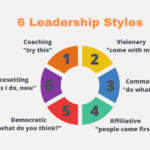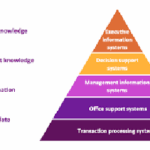Leadership success refers to the overall outcomes achieved by a leader in fulfilling their leadership role—whether positive or negative. It reflects the ability of a leader to influence employees and organizational processes in a way that meets defined goals. However, leadership success must be analyzed in light of both effectiveness and efficiency.
Leadership Success: Key Influencing Factors
Leadership success is shaped by multiple factors grouped into three primary categories:
1. The Leader (Supervisor)
The effectiveness of a leader is influenced by:
-
Authority and legitimacy in their role
-
Personality traits such as intelligence, resilience, persuasiveness
-
Human image, ideally aligned with Theory Y of McGregor’s XY Theory, which assumes employees are self-motivated and responsible
-
Behavioral style: cooperative, authoritarian, person-oriented, or task-oriented
-
Mental and emotional disposition
-
Physical fitness
2. The Employees
Employees’ impact on leadership success includes:
-
Abilities and competencies
-
Attitudes toward the leader
-
Behavioral patterns and willingness to cooperate
-
Emotional and physical disposition
3. The Leadership Situation
Leadership must be tailored to the surrounding context, including:
-
The task itself
-
The workplace environment
-
The overall working atmosphere
Leadership Efficiency: Measuring Social Impact
While leadership success emphasizes results, leadership efficiency focuses on the social outcomes of leadership behavior. These include:
-
Workplace climate
-
Conflict resolution or prevalence
-
Incidents of mobbing or workplace bullying
-
Levels of absenteeism
-
Signs of internal resignation (disengagement)
-
Employee turnover
Success Factors: Effectiveness vs. Efficiency
-
Leadership effectiveness refers to economic performance, including the quantity and quality of work delivered under a leader’s supervision.
-
Leadership efficiency represents social effectiveness, focusing on human-centered metrics such as employee well-being and team cohesion.
A truly successful leader demonstrates high effectiveness and high efficiency, aligning strategic goals with employee engagement and long-term organizational health.
« Back to Glossary Index





![15 Employee Offboarding Templates That Save Hours of HR Time [Free Downloads] 15 Employee Offboarding Templates That Save Hours of HR Time [Free Downloads]](https://i1.wp.com/www.hrcloud.com/hubfs/Header.png?w=150&resize=150,100&ssl=1)
